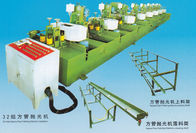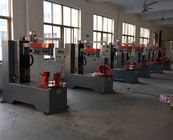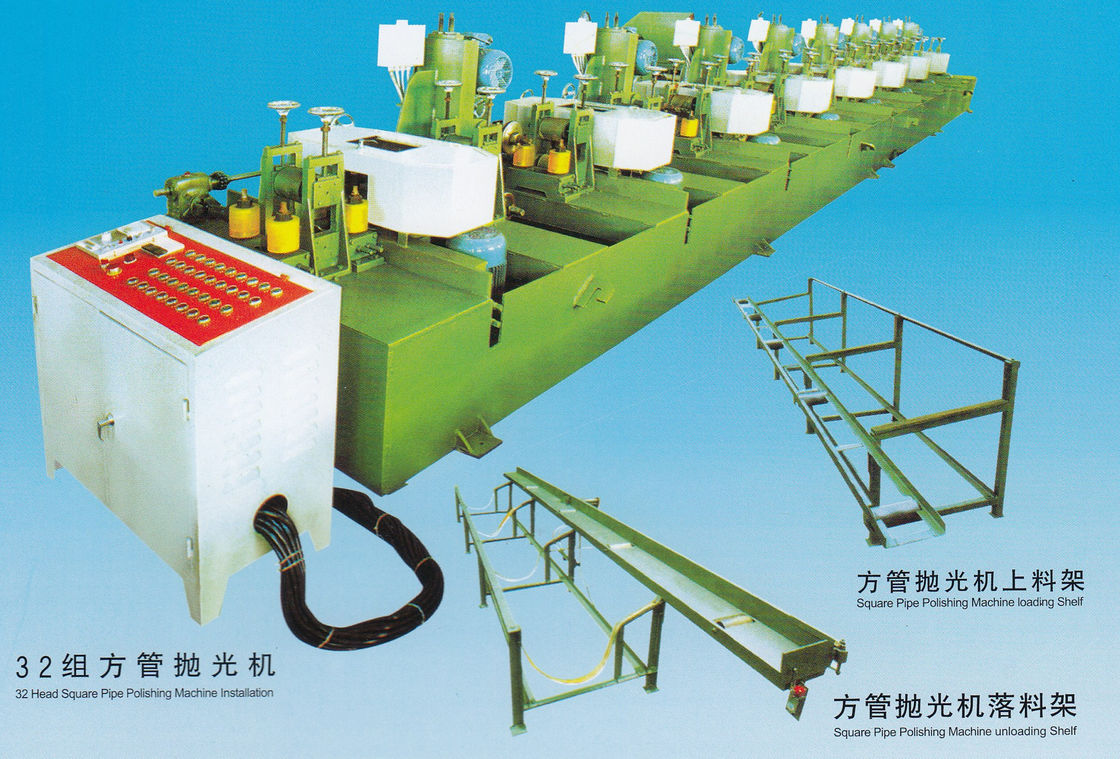13*25-95*45mm 32 Head Square Pipe Polishing Machine Installation 3-30m/min
1.description
Polishing and buffing are finishing processes for smoothing a workpiece's surface using an abrasive and a work wheel or a leather strop. Technically polishing refers to processes that use an abrasive that is glued to the work wheel, while buffing uses a loose abrasive applied to the work wheel. Polishing is a more aggressive process while buffing is less harsh, which leads to a smoother, brighter finish. A common misconception is that a polished surface has a mirror bright finish, however most mirror bright finishes are actually buffed.
Polishing is often used to enhance the appearance of an item, prevent contamination of instruments, remove oxidation, create a reflective surface, or prevent corrosion in pipes. In metallography and metallurgy, polishing is used to create a flat, defect-free surface for examination of a metal's microstructure under a microscope. Silicon-based polishing pads or a diamond solution can be used in the polishing process. Polishing stainless steel can also increase the sanitary benefits of it.
The removal of oxidization (tarnish) from metal objects is accomplished using a metal polish or tarnish remover; this is also called polishing. To prevent further unwanted oxidization, polished metal surfaces may be coated with wax, oil, or lacquer. This is of particular concern for copper alloy products such as brass and bronze.
2.process
The condition of the material at hand determines what type of abrasive will be applied. The first stage, if the material is unfinished, starts with a rough abrasive (perhaps 60 or 80 grit) and each subsequent stage uses a finer abrasive, such as 120, 180, 220/240, 320, 400 and higher grit abrasives, until the desired finish is achieved. The rough (i.e. large grit) passes remove imperfections within the metal surface like pits, nicks, lines and scratches. The finer abrasives leave progressively finer lines that are not visible to the naked eye. To achieve a #8 Finish (Mirror) it requires polishing and buffing compounds, polishing wheels and high speed polishing machines or other machine tools that can be used for polishing, like an electrical drill. Lubricants like wax and kerosene may be used as lubricating and cooling media during these operations, although some polishing materials are specifically designed to be used "dry." Buffing may be done by hand with a stationary polisher or die grinder, or it may be automated using specialized equipment.
When buffing there are two types of buffing motions: the cut motion and the color motion. The cut motion is designed to give a uniform, smooth, semi-bright surface finish. This is achieved by moving the workpiece against the rotation of the buffing wheel, while using medium to hard pressure. The color motion gives a clean, bright, shiny surface finish. This is achieved by moving the workpiece with the rotation of the buffing wheel, while using medium to light pressure.
When polishing brass (a softer metal) there are often minute marks in the metal caused by impurities. To smooth out the finer marks, the surface is polished with a very fine (600) grit, copper plated, then buffed to a mirror finish with an airflow mop.Polishing operations for items such as chisels, hammers, screwdrivers, wrenches, etc., are given a fine finish but not plated. In order to achieve this finish four operations are required: roughing, dry fining, greasing, and coloring. Note that roughing is usually done on a solid grinding wheel and for an extra fine polish the greasing operation may be broken up into two operations: rough greasing and fine greasing. However, for inexpensive items money is saved by only performing the first two operations.
Polishing knives and cutlery is known as fine glazing or blue glazing. Sand buffing, when used on German silver, white metal, etc., is technically a buffing operation because it uses a loose abrasive, but removes a significant amount of material, like polishing
| condition |
new |
| grinder axis |
M27,M36 mm |
| working size |
13*25-95*45mm |
| working speed |
3-30m/min |
| main unit size |
11700*1500 mm |
| weight |
11000kg |
| rated voltage |
380v |
| rated power |
132kw |





